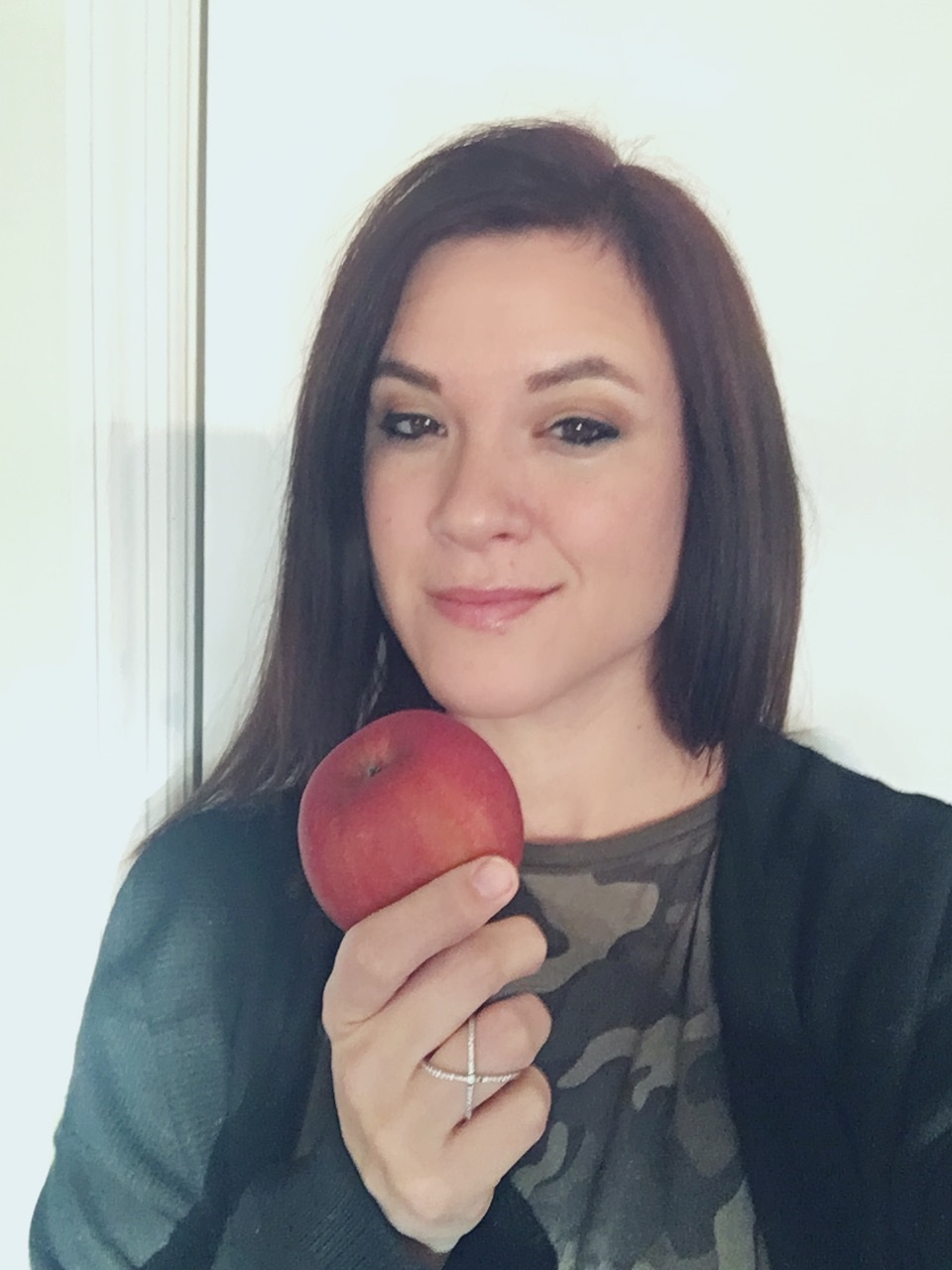Language and speech delays are one of the first signs that alert a parent to a developmental delay such as autism or apraxia. This was certainly the case with our son. Around two years old, I started to notice that our son was not talking as much as his peers. Most of the kids his age were speaking in complete sentences, while he only spoke a simple word or sound here and there. I shared my concerns many times with the pediatrician, who gave us extremely bad advice. Since our son was hitting speech milestones, the pediatrician never screened for language delays. I also knew nothing at the time about the difference between speech and language.
In case you are not familiar with the difference between the two, speech issues tend to refer to pronunciations, sounds and utterances. If speech delays are present, one may have a hard time understanding some of the words spoken. Language, however, is the whole system of words in a sentence or conversation put together. A child with a language delay might be able to communicate some words, but may have a hard time putting the words together.
This was the case with our son. His speech was mostly on par. But, his language was severely delayed. Eventually, however, I pushed for further testing, which led us down the path of diagnosis, and more aggressive speech therapy/early intervention. I think many parents experience a similar path, where they start to see the red flags around age two, when their kids are not keeping pace with communication. It was a difficult time, not knowing whether our son would ever be able to speak. The biggest fear and sadness I remember in those early days was the thought of not being able to hear my son say “I love you.”
*Affiliate Disclaimer: This post may include affiliate links where I get paid a commission for some recommendations. However, I only bring you resources that I have personally tried or researched, and firmly stand by them. As an Amazon Affiliate, I earn on qualifying purchases.
Thankfully, early intervention worked for us and he now speaks in full conversation like his peers, with our primary therapy focus now on social pragmatics. There are high chances for your child, as well, if you are getting started early. One of the most helpful books I read early on was titled Overcoming Autism by Lynn Koegel and Claire Lazebnek. In this book, there is a whole section dedicated to language. According to the author, 95% of children with ASD who are nonverbal will learn to communicate verbally if they recieve the appropriate intervention before the age of three. Between the ages of 3-5, the chances of becoming verbal are still between 85-90%. I was very encouraged by that statistic and made sure to immerse our son in as much language-based intervention as possible. I would encourage you to read this book, as well, just to get an overall understanding of the basic approaches that are typically most successful in language intervention.
Another book I recommend is An Early Start for Your Child with Autism. This book is more geared towards the younger child, as early as 18 months old. It explores in detail the hands-on approaches you could take at home for a toddler. A lot of the strategies focus on encouraging eye contact and social interaction as the beginning precursors to verbal language. This was the very first book I ever read after hearing the words “autism.” I found that reading a number of evidence-based books and materials was very helpful for me to better understand the “why’s” and “how’s” behind my son’s therapy. This enabled me to provide him more support at home to be as consistent as possible.
We learned a lot in the first year of private speech therapy and explored different ways to reinforce all that we were learning at home. In this article, I hope to share with you some of the approaches and strategies we used, that I truly believe were part of the key to our son’s success.
*Disclaimer: I am not a licensed speech therapist or a medical professional, but rather an autism mom. Please consult your physician before considering the tips in this post. It is not intended as medical or therapy advice. I am sharing this guide more as ideas I have learned over the years from working at home with my son. I can’t guarantee results or that your child will have the same prognosis. These are simply ideas you can experiment with and try at home.
Peer Modeling
One of the most important things you can do for your child’s speech and language is to immerse them with other neurotypical children. Statistics show that kids learn best from their peers. This is one of many reasons why inclusion is so important in school classrooms. The more children with delays watch and interact with their peers, the more skills they acquire. When we first started our journey, our speech therapist recommended a school program for him from the start. I was a stay-at-home mom, so I had not even considered school for him yet. But at her recommendation, we immediately enrolled him in a part-time preschool class until we later were offered a full-time program.

One of my son’s strengths in learning is that he is a big imitator. A lot of his language starts out as what is known as scripting. This is a form of communication kids on the spectrum often use. He tends to repeat phrases he’s heard in a repetitive way. Scripting can be hard to shape into more organic language. However, my son usually launches into more advanced language from there eventually. His imitation can act both as an advantage and a disadvantage at times. While his repetitive phrases can impede him socially at times, it also served him well for learning and absorbing appropriate responses and conversations in the world around him. Our speech therapist noted that the fact that he was an imitator and also exhibited eye contact and the desire to connect socially, gave him an advantage at picking up the skills he needed to be successful at language. I believe she was right and therefore, continue to use as much modeling as possible.
The fact that he learns so well from his peers means that I sometimes ask my daughter (my son’s older sister) to demonstrate a skill I’d like to teach him. She is usually much more effective at teaching him and breaking through the learning barrier. So, if you have other kids in your household, a great supplement is to utililize your child’s siblings as much as possible.
Watch You Tube Videos
I know that screen time is typically frowned upon. However, we relied upon it heavily during the early years as a way for our son to observe his peers modeling language. As discussed above, peer modeling is one of the most effective best practices. However, it is a tool that is at the mercy of having enough time with other children. My son only attended school part-time at first with his neurotypical peers. I felt the urge to inundate him with as much peer modeling as possible so I used You Tube videos as a supplement. It was also one of the most effective ways to motivate him to learn. I never had a problem getting him to watch fun videos of kids playing with the toys he wanted. I tried to pick videos that not only featured kids playing with toys appropriately, but also engaging in conversation and appropriate commentary.
Also, if there was a skill we wanted to teach him, we’d turn on You Tube and search for videos of a kid close to his age to show him first. This was always way more effective than us trying to describe or show him the skill. For example, we wanted to help him learn to ride a toddler scooter at home. Therefore, we would find some You Tube videos of other kids riding scooters to demonstrate for him.
At times, this screen time did act as a babysitter, I’m not going to lie. It was a huge relief to find something that kept my son busy while I could concentrate on some of my household tasks. However, I tried as much as I could to watch with him, so that I could highlight the language benefits offered in the series. Try not to just let You Tube run, if you can help it. The more that you can create discussions around the toys they are watching, the better. Try to build in verbs and nouns and simple language at their level.
Here are a couple of the channels we used to watch in the early toddler/preschool years:
Read Books
One of the best things you can also do to promote language and speech for your child is to read books to them often. Even if your child acts like they are not paying attention, consistency is key. The more they hear the words repeated and can associate them with pictures, the better. It is also okay if you feel like you are reading the same books over and over again. My son certainly had special interests, so we read the same favorite book sometimes 5-6 times a day. Here are some great ideas below for books that promote speech and language development and were personal favorites of ours, as well.
Play Games
In addition to books that encourage language and speech development, there are several fun games on the market, as well. We tried to play a lot of board games, card games or other types of activities that instill turn taking, direction following and vocabulary enrichment. Below are my top recommendations for games you on find on Amazon both for younger children just starting out and for older children with more advanced language needs.
Build Language into Your Routine
In helping your child with their speech and language, you want to build in opportunities for vocabulary and language throughout your every day routine. For example, when it’s time to transition to the bath, first explain to your child that it is bathtime. As you are preparing the water, label the process of the bath. “I’m turning on the WATER. I’m using SOAP on your ARMS. Now I am using SOAP on your LEGS, etc.” Consistently label every object and step as you go along. Constantly look for opportunities to describe things and talk. Basically, you want to continually allow your child to associate words with objects, actions and people in their environment.

When my son was little and only saying a few words here and there, I remember we would take a morning walk in his stroller every day. This was usually my only time to enjoy a little peace and quiet where I could get out and exercise and enjoy nature, without having to chase after him in the house. Therefore, I loved to be able to plug in some headphones and tune out the world for a few minutes. However, as I became aware that I needed to be working on building language with him, I started removing the headphones and providing narration on our walk around the block. I’d describe the birds, the color of the sky, the fences, the houses, etc. It is exhausting at first, but once you get into the habit of speaking language into your child’s day, it will become ingrained in you. In fact, I found myself narrating for grown adults without even realizing it at times. LOL!
Also, when building this language into your home, you want to meet your child at their language level. If they are nonverbal and have not spoken any words yet, then start with very simple one-word phrases. When you move to bath time, stick with “BATH” at first, then “SOAP” then “ARMS,” etc. My son was only saying one word at a time, so my goal was to stretch him to two words at a time next. Therefore, I tried to use two-word phrases consistently. “BATH TIME,” “NOW SOAP,” “NOW ARMS,” etc.
Behavior Reinforcement
Often times, you will find that behavior and speech/language go hand in hand. When a child can not communicate their feelings and desires, it can lead to a lot of frustration and meltdowns. I certainly noticed that as our son’s communication improved, his behavior improved, as well. There is a significant relationship between the two. Therefore, sometimes speech therapy involves behavior reinforcement practices.
What I mean by that is using a reward system of some kind to encourage the type of progress you’d like to see from your child. For example, if your child wants a cookie from the pantry, they might ask for it by asking you “cookie.” The trap we fall into as parents is we know our kids better than anyone else. We can sometimes anticipate what our child wants before they even ask. A lot of times, we provide it whether they’ve worked for it or not. I used to do this all the time, mostly as a preventative way to avoid a meltdown. However, it didn’t require my son to speak and expand his vocabulary when mom acted as his mind-reader. Instead, I had to readjust my responses by prompting him to speak more. He was saying only one word “cookie,” but my goal was to start stretching him to more than one word at a time. So, I began to demand that he say “cookie, please” before I would reward him with it. If your child isn’t saying it at first, that’s okay. Even if they attempt to say it or even form the letter “P” instead of “please,” you want to reward that attempt instantly.

Applied Behavior Analysis (ABA) is a primary behavior method used in autism intervention and is often used as the tool to teach children everything from communication to social skills to self-help skills. There is a lot of complicated research and analysis that goes into ABA. But, to summarize it in layman’s terms, it is the idea of reinforcing the behaviors that you want to see and downplaying/ignoring/discouraging the behaviors you don’t want to see. If your child goes so far as to say “cookie, please” when that has been your goal, you want to really play that up. Make a huge deal out of it and make it very exciting that your child accomplished them. On the opposite end, if they are engaging in behaviors that are not desirable, try to ignore the behavior and not offer much attention. Kids are more prone to engage in behaviors that grant them attention regardless of whether it is positive or negative. You want to save as much attention as you can for the desired behaviors or goals. This certainly applies with stretching your child’s communication just as much as reinforcing good behaviors.
Leading Questions
For kids who are already older and have more advanced verbal skills, it is important to work on certain leading questions with them. In the book Overcoming Autism, the author discusses how the kids who learn to actually initiate questions in conversation tend to experience a greater prognosis. Therefore, I constantly asked my son questions and modeled that kind of language as a way to initiate conversation. This gave him ideas of how to approach social situations properly. It prompts more advanced back and forth conversation, as opposed to simple scripted phrases. As I discussed previously, my son is an imitator, so he eventually began replicating the same types of conversation framework I modeled for him. He now initiates conversations with no problems.
In addition to leading with questions, another major focus that tends to need further attention is the 5 “wh” words. This means leading with questions that begin with “who,” “what,” “where,” “when,” and “why.” This is advanced language that still requires some practice for my son even now at 7 years old. However, it is important to help your child practice the difference between these types of questions. This helps further expand their vocabulary as well as their social pragmatic skills.
This wraps up the series on speech and language strategies. Be on the lookout for more like this in the “At-Home Therapy” series where I’ll be addressing other types of skill sets and interventions. Check out more on autism and special needs resources on my Shop page. You can also subscribe to the blog or follow me on Facebook or Instagram for more posts like these in the future. Other posts you may enjoy:








